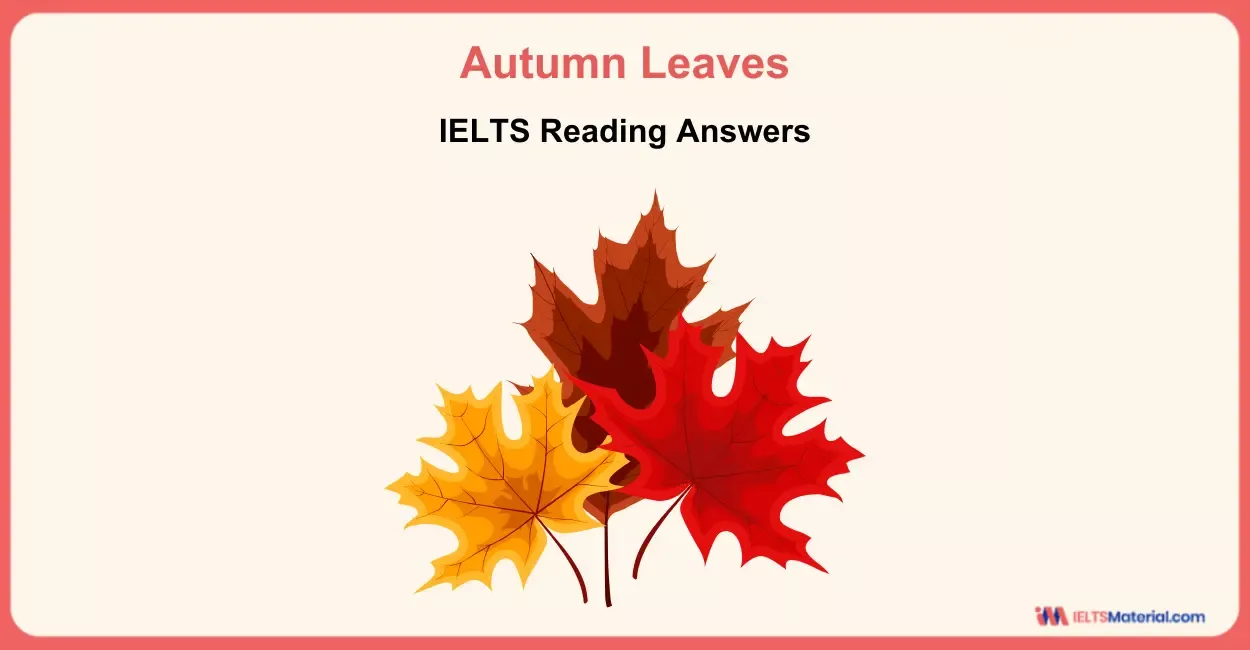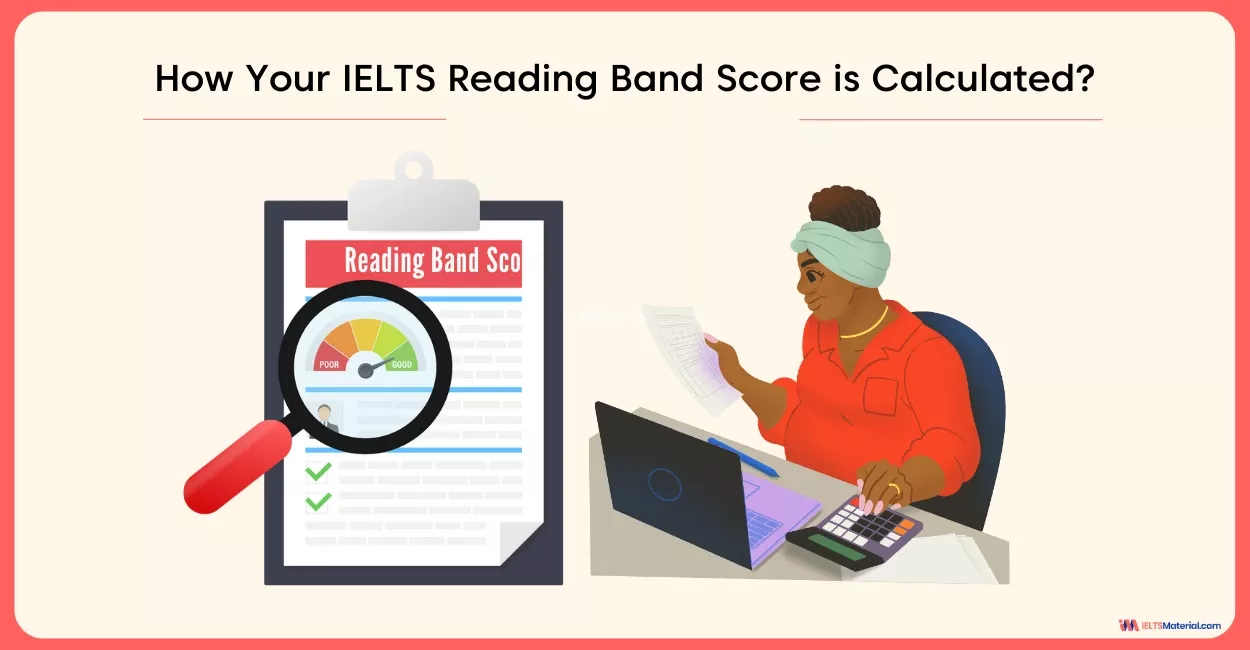Why Being Bored is Stimulating and Useful Too - IELTS Reading Answers
16 min read
Updated On
-
Copy link
Get ready for the IELTS Academic Reading section, with topics such as ‘Why Being Bored is Stimulating and Useful Too’ & boost your IELTS reading band score. You will find detailed answer explanations & targeted tips in this blog for Band 9 preparation.
Table of Contents
- Passage for Why Being Bored is Stimulating and Useful Too IELTS Reading Answers
- Questions for Why Being Bored is Stimulating and Useful Too Reading Answers
- Answers and Explanations of Why Being Bored is Stimulating and Useful Too IELTS Reading Passage
- Tips for Answering the Question Types in the Why Being Bored is Stimulating and Useful Too Reading Passage

Limited-Time Offer : Access a FREE 10-Day IELTS Study Plan!
Reading three lengthy passages back-to-back under time pressure can be mentally draining, especially if you are not used to reading dense academic or informational texts. That’s why it is important to start practicing with single passages from IELTS recent actual tests, like ‘Why Being Bored is Stimulating and Useful Too' - IELTS Reading Answers.
So, in this blog, we will solve questions based on the Why Being Bored is Stimulating and Useful Too IELTS Reading passage, provide explanations, locations for the answers, and tips to help you handle the three different types of reading question types here.
Passage for Why Being Bored is Stimulating and Useful Too IELTS Reading Answers
Go through the Why Being Bored is Stimulating and Useful Too IELTS Reading Answers passage given below and prepare yourself for the reading section with this IELTS Reading practice test.
Why Being Bored is Stimulating and Useful Too
This most common of emotions is turning out to be more interesting than we thought
A We all know how it feels – it’s impossible to keep your mind on anything, time stretches out, and all the things you could do seem equally unlikely to make you feel better. But defining boredom so that it can be studied in the lab has proved difficult. For a start, it can include a lot of other mental states, such as frustration, apathy, depression and indifference. There isn’t even agreement over whether boredom is always a low-energy, flat kind of emotion or whether feeling agitated and restless counts as boredom, too. In his book, Boredom: A Lively History, Peter Toohey at the University of Calgary, Canada, compares it to disgust – an emotion that motivates us to stay away from certain situations. ‘If disgust protects humans from infection, boredom may protect them from “infectious” social situations, he suggests.
B By asking people about their experiences of boredom, Thomas Goetz and his team at the University of Konstanz in Germany have recently identified five distinct types: indifferent, calibrating, searching, reactant and apathetic. These can be plotted on two axes – one running left to right, which measures low to high arousal, and the other from top to bottom, which measures how positive or negative the feeling is. Intriguingly, Goetz has found that while people experience all kinds of boredom, they tend to specialise in one. Of the five types, the most damaging is ‘reactant’ boredom with its explosive combination of high arousal and negative emotion. The most useful is what Goetz calls ‘indifferent’ boredom: someone isn’t engaged in anything satisfying but still feels relaxed and calm. However, it remains to be seen whether there are any character traits that predict the kind of boredom each of us might be prone to.
C Psychologist Sandi Mann at the University of Central Lancashire, UK, goes further. ‘All emotions are there for a reason, including boredom, she says. Mann has found that being bored makes us more creative. ‘We’re all afraid of being bored but in actual fact it can lead to all kinds of amazing things, she says. In experiments published last year, Mann found that people who had been made to feel bored by copying numbers out of the phone book for 15 minutes came up with more creative ideas about how to use a polystyrene cup than a control group. Mann concluded that a passive, boring activity is best for creativity because it allows the mind to wander. In fact, she goes so far as to suggest that we should seek out more boredom in our lives.
D Psychologist John Eastwood at York University in Toronto, Canada, isn’t convinced. ‘If you are in a state of mind-wandering you are not bored, he says. ‘In my view, by definition boredom is an undesirable state’. That doesn’t necessarily mean that it isn’t adaptive, he adds. ‘Pain is adaptive – if we didn’t have physical pain, bad things would happen to us. Does that mean that we should actively cause pain? No. But even if boredom has evolved to help us survive, it can still be toxic if allowed to fester. For Eastwood, the central feature of boredom is a failure to put our ‘attention system’ into gear. This causes an inability to focus on anything, which makes time seem to go painfully slowly. What’s more, your efforts to improve the situation can end up making you feel worse. ‘People try to connect with the world and if they are not successful there’s that frustration and irritability, he says. Perhaps most worryingly, says Eastwood, repeatedly failing to engage attention can lead to state where we don’t know what to do any more, and no longer care.
E Eastwood’s team is now trying to explore why the attention system fails. It’s early days but they think that at least some of it comes down to personality. Boredom proneness has been linked with a variety of traits. People who are motivated by pleasure seem to suffer particularly badly. Other personality traits, such as curiosity, are associated with a high boredom threshold. More evidence that boredom has detrimental effects comes from studies of people who are more or less prone to boredom. It seems those who bore easily face poorer prospects in education, their career and even life in general. But of course, boredom itself cannot kill – it’s the things we do to deal with it that may put us in danger. What can we do to alleviate it before it comes to that? Goetz’s group has one suggestion. Working with teenagers, they found that those who ‘approach’ a boring situation – in other words, see that it’s boring and get stuck in anyway – report less boredom than those who try to avoid it by using snacks, TV or social media for distraction.
F Psychologist Francoise Wemelsfelder speculates that our over-connected lifestyles might even be a new source of boredom. ‘In modern human society there is a lot of overstimulation but still a lot of problems finding meaning, she says. So instead of seeking yet more mental stimulation, perhaps we should leave our phones alone, and use boredom to motivate us to engage with the world in a more meaningful way.
Questions for Why Being Bored is Stimulating and Useful Too Reading Answers
The Academic passage, Why Being Bored is Stimulating and Useful Too, is a reading passage from Cambridge IELTS 13 Test 1. It consists of 13 questions and showcases three different IELTS Reading question types with examples.
The question types found in this reading passage are:
- IELTS Reading Matching Headings (Q. 14-19)
- IELTS Reading Matching Features (Q. 20-23)
- IELTS Reading Summary Completion (Q. 24-26)
Now, set your time, and let’s get started with the questions!
Questions 14-19
The Reading Passage has six paragraphs, A-F.
Choose the correct heading for each paragraph from the list of headings below.
Write the correct number, i-viii, in boxes 14-19 on your answer sheet.
List of Headings
i The productive outcomes that may result from boredom
ii ‘What teachers can do to prevent boredom
iii A new explanation and a new cure for boredom
iv Problems with a scientific approach to boredom
v A potential danger arising from boredom
vi Creating a system of classification for feelings of boredom
vii Age groups most affected by boredom
viii Identifying those most affected by boredom
14 Paragraph A
15 Paragraph B
16 Paragraph C
17 Paragraph D
18 Paragraph E
19 Paragraph F
Questions 20-23
Look at the following people (Questions 20-23) and the list of ideas below.
Match each person with the correct idea, A-E.
Write the correct letter, A-E, in boxes 20-23 on your answer sheet.
20 Peter Toohey
21 Thomas Goetz
22 John Eastwood
23 Francoise Wemelsfelder
List of Ideas
A The way we live today may encourage boredom.
B One sort of boredom is worse than all the others.
C Levels of boredom may fall in the future.
D Trying to cope with boredom can increase its negative effects.
E Boredom may encourage us to avoid an unpleasant experience.
Questions 24-26
Complete the summary below.
Choose ONE WORD ONLY from the passage for each answer.
Write your answers in boxes 24-26 on your answer sheet.
Responses to boredom
For John Eastwood, the central feature of boredom is that people cannot 24……………… due to a failure in what he calls the ‘attention system), and as a result they become frustrated and irritable. His team suggests that those for whom 25……………….. is an important aim in life may have problems in coping with boredom, whereas those who have the characteristic of 26………….. can generally cope with it.
Learn quick solving tips and reading techniques from experts!
Connect with us through our FREE IELTS online classes!
Answers and Explanations of Why Being Bored is Stimulating and Useful Too IELTS Reading Passage
Now check your answers with the answer key for the Why Being Bored is Stimulating and Useful Too IELTS Reading passage, complete with detailed explanations, and prepare to score a high IELTS Academic Reading score.
14 Answer: iv
Question type: Matching Headings
Answer location: Paragraph A, line 2 – line 4
Answer explanation: In the mentioned lines, it is given “But defining boredom so that it can be studied in the lab has proved difficult. For a start, it can include a lot of other mental states, such as frustration, apathy, depression and indifference. There isn’t even agreement over whether boredom is always a low-energy, flat kind of emotion or whether feeling agitated and restless counts as boredom, too.”. This reference proves that the first paragraph states that scientific experiments (lab experiments) made to study boredom are difficult (has problems) as it does not have a specific reason or form. Hence, the answer is iv (Problems with a scientific approach to boredom).
15 Answer: vi
Question type: Matching Headings
Answer location: Paragraph B, line 1
Answer explanation: In the mentioned line, it is reported that “By asking people about their experiences of boredom, Thomas Goetz and his team at the University of Konstanz in Germany have recently identified five distinct types: indifferent, calibrating, searching, reactant and apathetic.”. This points to the fact that Thomas Goetz and his team has been able to create a classification of boredom and they have been discussed in this paragraph. Hence, the answer is vi (Creating a system of classification for feelings of boredom).
Unlock Explanations
16 Answer: i
Question type: Matching Headings
Answer location: Paragraph C
Answer explanation: In the third paragraph, it is stated that “…Mann has found that being bored makes us more creative. ‘We’re all afraid of being bored but in actual fact it can lead to all kinds of amazing things, she says. …Mann concluded that a passive, boring activity is best for creativity because it allows the mind to wander. …” It can be pointed out that through the experiment and conclusions drawn by psychologist Sandi Mann, the writer, in this paragraph, states that there are productive outcomes of boredom. Hence, the answer is i (The productive outcomes that may result from boredom).
17 Answer: v
Question type: Matching Headings
Answer location: Paragraph D
Answer explanation: Through lines like, “But even if boredom has evolved to help us survive, it can still be toxic if allowed to fester. For Eastwood, the central feature of boredom is a failure to put our ‘attention system’ into gear. This causes an inability to focus on anything, which makes time seem to go painfully slowly. What’s more, your efforts to improve the situation can end up making you feel worse.”, the writer wants to draw our attention to the negative effects of boredom as discussed by psychologist John Eastwood at York University in Toronto, Canada in this paragraph. Hence, the answer is v (A potential danger arising from boredom).
18 Answer: viii
Question type: Matching Headings
Answer location: Paragraph E
Answer explanation: In the mentioned paragraph, it is stated that “Boredom proneness has been linked with a variety of traits. People who are motivated by pleasure seem to suffer particularly badly. Other personality traits, such as curiosity, are associated with a high boredom threshold.” In this particular paragraph the writer refers to the different types of traits in people that lead to boredom. For example, it is mentioned that people who are motivated by pleasure are more prone to boredom than those who have high curiosity levels. Hence, the answer is viii (Identifying those most affected by boredom).
19 Answer: iii
Question type: Matching Headings
Answer location: Paragraph F
Answer explanation: In the last paragraph, it is said that “Psychologist Francoise Wemelsfelder speculates that our over-connected lifestyles might even be a new source of boredom. … So instead of seeking yet more mental stimulation, perhaps we should leave our phones alone, and use boredom to motivate us to engage with the world in a more meaningful way.”. Based on this reference, it can be concluded that the writer is concluding the passage with a new explanation to boredom (our over-connected lifestyles) and a new approach of how we can deal with it (leave our phones alone, and use boredom to motivate us to engage with the world in a more meaningful way). Hence, the answer is iii (A new explanation and a new cure for boredom).
20 Answer: E
Question type: Matching Features
Answer location: Paragraph A, line 5 – line 6
Answer explanation: The following lines –In his book, Boredom: A Lively History, Peter Toohey at the University of Calgary, Canada, compares it to disgust – an emotion that motivates us to stay away from certain situations. ‘If disgust protects humans from infection, boredom may protect them from “infectious” social situations, he suggests.– establishes the fact that Peter Toohey opines that, like disgust, boredom also enables us to avoid certain unpleasant situations like “infectious” social situations. Hence, the answer is E (Boredom may encourage us to avoid an unpleasant experience).
21 Answer: B
Question type: Matching Features
Answer location: Paragraph B, line 4
Answer explanation: In the specific line, it is mentioned that “Of the five types, the most damaging is ‘reactant’ boredom with its explosive combination of high arousal and negative emotion.”. In other words, it can be said that Thomas Goetz has classified boredom in five types and has found out that one specific type, reactant boredom, is more damaging than the others as it is a mix of high arousal and negative emotion. Hence, the answer is B (One sort of boredom is worse than all the others.).
22 Answer: D
Question type: Matching Features
Answer location: Paragraph D, line 10 – line 11
Answer explanation: In Paragraph D, it is stated that “What’s more, your efforts to improve the situation can end up making you feel worse. ‘People try to connect with the world and if they are not successful there’s that frustration and irritability, he says.”. This indicates that John Eastwood believes that if one tries to deal with boredom and fails, it can lead to frustration which in turn will have negative effects on the person. Hence, the answer is D (Trying to cope with boredom can increase its negative effects.).
23 Answer: A
Question type: Matching Features
Answer location: Paragraph F, line 1
Answer explanation: The given line specifies that “Psychologist Francoise Wemelsfelder speculates that our over-connected lifestyles might even be a new source of boredom.”. It is affirmed that Francoise Wemelsfelder had commented that our lifestyle (the way we live today) is one of the sources of boredom. Hence, the answer is A (The way we live today may encourage boredom.).
24 Answer: focus
Question type: Summary Completion
Answer location: Paragraph D, line 8 – line 9
Answer explanation: In the specified lines, it is given “For Eastwood, the central feature of boredom is a failure to put our ‘attention system’ into gear. This causes an inability to focus on anything, which makes time seem to go painfully slowly.”. This reference proves that John Eastwood believes that the central feature of boredom is that people cannot focus due to a failure in what he calls the ‘attention system. Hence, the answer is ‘focus’.
25 Answer: pleasure
Question type: Summary Completion
Answer location: Paragraph E, line 4
Answer explanation: In the given location, it is given that “People who are motivated by pleasure seem to suffer particularly badly.”. This shows that according to Eastwood’s team, people for whom pleasure is very important have problems in coping with boredom. Hence, the answer is ‘pleasure’.
26 Answer: curiosity
Question type: Summary Completion
Answer location: Paragraph E, line 5
Answer explanation: In the mentioned line, it is reported that “Other personality traits, such as curiosity, are associated with a high boredom threshold.”. This points to the fact that those who are curious in nature can generally cope with it. Hence, the answer is ‘curiosity’.
Learn proven methods to conquer single reading passages within 20 minutes.
Join our FREE IELTS online webinars!
Tips for Answering the Question Types in the Why Being Bored is Stimulating and Useful Too Reading Passage
Let us check out some quick IELTS exam preparation tips for band score of 8+ and to answer the types of questions in the Why Being Bored is Stimulating and Useful Too Reading passage.
Matching Headings
- Read the List of Headings First: Understand the overall themes (e.g., causes, consequences, classifications, age groups, dangers). Then, look for subtle differences between similar headings. For example, ‘identifying those affected’ vs ‘age groups most affected’.
- Skim One Paragraph at a Time: Read the first 2–3 lines and last 2 lines of each paragraph, as they usually reveal the main idea.
- Ignore Supporting Details: Do not get caught in statistics or examples. Focus only on what the paragraph as a whole is trying to say.
- Use Process of Elimination: Cross off headings that clearly don’t match. If two seem close, go back to the paragraph and match the central point, not the topic, but the main point about that topic.
- Watch for Distractors: A paragraph may mention multiple ideas, but only one is the core focus. For example, a paragraph may list outcomes of boredom but mainly argue why one is dangerous. So, match it with ‘a potential danger’ (v), not ‘productive outcomes’ (i).
Matching Features
- Underline the Names in the Questions: Quickly scan the passage to find where each person (e.g., Peter Toohey, Thomas Goetz) is mentioned. Usually, each name appears only once.
- Read 1–2 Sentences Before and After the Name: You need to understand the context of their view or research, not just the sentence with the name. It will help you locate the answer quickly.
- Understand What the Ideas in the List Mean: It is essential to match the correct name to the accurate idea. For example, ‘may encourage us to avoid unpleasant experiences’ means ‘boredom motivates us to escape something’. If you fails to understand the actual meaning, it will lead to confusion and wrong answer.
- Paraphrase the Person’s Opinion: Put their idea in your own words and match it with the closest paraphrase in the list. For example: If the passage says, ‘Toohey sees boredom as a mechanism for self-preservation’, this aligns with avoiding unpleasant experiences, and so the answer will be ‘E’.
- Watch for Subtle Differences in the Options: ‘Coping’ vs ‘not coping’, ‘present problem’ vs ‘future improvement’, or ‘negative effects’ vs ‘useful outcomes’ - each change shifts the answer. So, read and understand carefully before making the final decision.
Summary Completion
- Read the Entire Summary First: Get a feel for the flow and understand the overall topic with the given heading and question paragraph (e.g., John Eastwood’s theory of boredom).
- Identify the Type of Word Needed: Once you go through the summary, check whether you are looking for a noun, verb, or adjective based on the blank’s position in the sentence. For example: ‘…cannot ___ due to a failure in what he calls the ‘attention system’’ → this is likely a verb related to mental focus.
- Scan the Passage for Key Terms: Look for ‘John Eastwood’, ‘attention system’, ‘cope with boredom’ — use these as locating keywords.
- Choose Exactly One Word: Double-check that your selected word is one single word from the passage and fits the grammar of the sentence.
In conclusion, IELTS Reading samples like Why Being Bored is Stimulating and Useful Too IELTS Reading Answers are essential to the reading exam preparation. They will help you in becoming more accustomed to the reading question types, increasing your reading speed, and figuring out your areas of weakness. So, continue to take such tests and achieve your desired results.
Useful Links:
- Living with Artificial Intelligence – IELTS Reading Answers
- Persistent Bullying Reading Answers
- Alfred Wegener - IELTS Reading Answers
- Insight Or Evolution? - IELTS Reading Answers
- 101 IELTS Academic Reading Past Test Papers with Answers PDF Download
- Time Management for IELTS Reading – A Key to Get a High Band Score
Practice IELTS Reading based on question types

Start Preparing for IELTS: Get Your 10-Day Study Plan Today!
Explore other Reading Practice Tests

Kasturika Samanta

Kasturika Samanta

Nehasri Ravishenbagam
Recent Articles

Nehasri Ravishenbagam

Haniya Yashfeen

Haniya Yashfeen

Haniya Yashfeen





Post your Comments